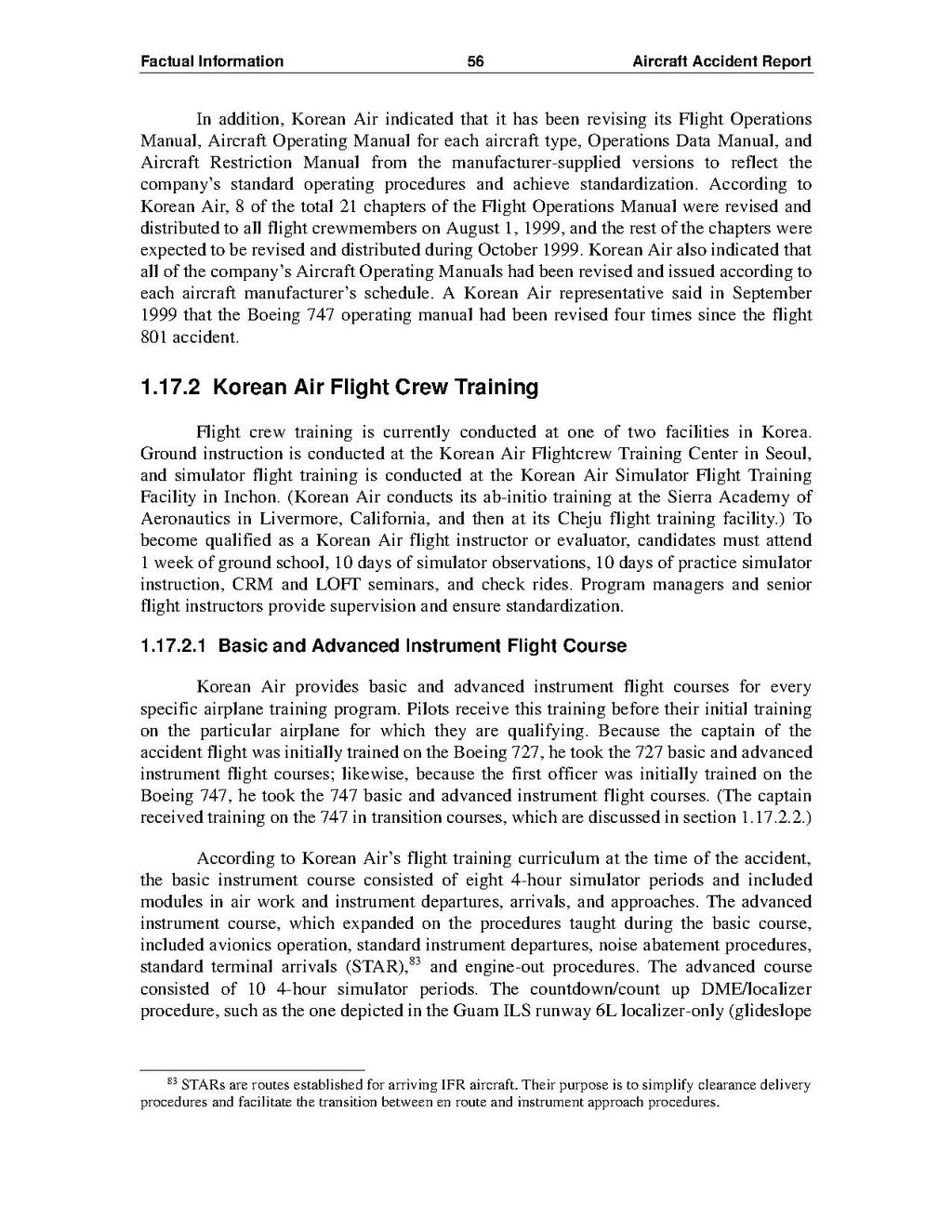In addition, Korean Air indicated that it has been revising its Flight Operations Manual, Aircraft Operating Manual for each aircraft type, Operations Data Manual, and Aircraft Restriction Manual from the manufacturer-supplied versions to reflect the company's standard operating procedures and achieve standardization. According to Korean Air, 8 of the total 21 chapters of the Flight Operations Manual were revised and distributed to all flight crewmembers on August 1, 1999, and the rest of the chapters were expected to be revised and distributed during October 1999. Korean Air also indicated that all of the company's Aircraft Operating Manuals had been revised and issued according to each aircraft manufacturer's schedule. A Korean Air representative said in September 1999 that the Boeing 747 operating manual had been revised four times since the flight 801 accident.
1.17.2 Korean Air Flight Crew Training
Flight crew training is currently conducted at one of two facilities in Korea. Ground instruction is conducted at the Korean Air Flightcrew Training Center in Seoul, and simulator flight training is conducted at the Korean Air Simulator Flight Training Facility in Inchon. (Korean Air conducts its ab-initio training at the Sierra Academy of Aeronautics in Livermore, California, and then at its Cheju flight training facility.) To become qualified as a Korean Air flight instructor or evaluator, candidates must attend 1 week of ground school, 10 days of simulator observations, 10 days of practice simulator instruction, CRM and LOFT seminars, and check rides. Program managers and senior flight instructors provide supervision and ensure standardization. 1.17.2.1 Basic and Advanced Instrument Flight Course Korean Air provides basic and advanced instrument flight courses for every specific airplane training program. Pilots receive this training before their initial training on the particular airplane for which they are qualifying. Because the captain of the accident flight was initially trained on the Boeing 727, he took the 727 basic and advanced instrument flight courses; likewise, because the first officer was initially trained on the Boeing 747, he took the 747 basic and advanced instrument flight courses. (The captain received training on the 747 in transition courses, which are discussed in section 1.17.2.2.) According to Korean Air's flight training curriculum at the time of the accident, the basic instrument course consisted of eight 4-hour simulator periods and included modules in air work and instrument departures, arrivals, and approaches. The advanced instrument course, which expanded on the procedures taught during the basic course, included avionics operation, standard instrument departures, noise abatement procedures, standard terminal arrivals (STAR),[1] and engine-out procedures. The advanced course consisted of 10 4-hour simulator periods. The countdown/count up DME/localizer procedure, such as the one depicted in the Guam ILS runway 6L localizer-only (glideslope
- ↑ STARs are routes established for arriving IFR aircraft. Their purpose is to simplify clearance delivery procedures and facilitate the transition between en route and instrument approach procedures.
